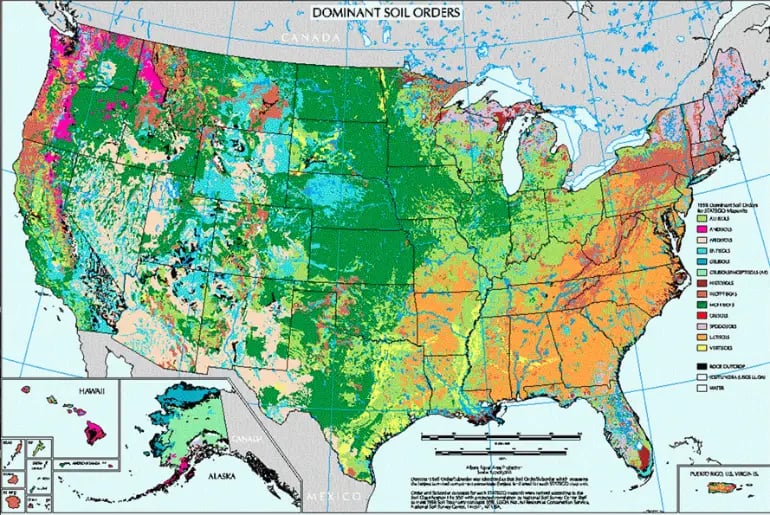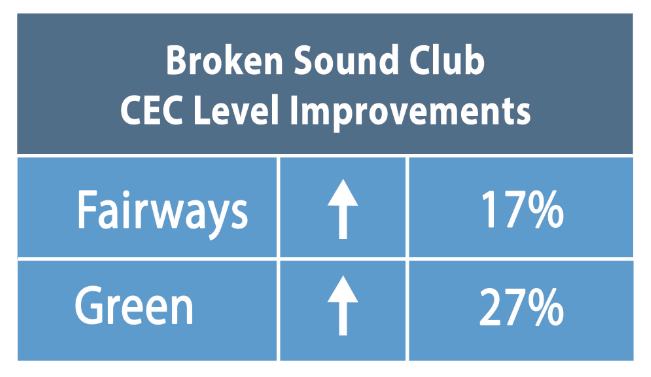%20(1).webp?width=770&height=385&name=Resize_download%20(45)%20(1).webp)
Soil isn’t dirt. Instead, soil is a living, dynamic ecosystem that nurtures healthy plants.
According to the Mississippi State University Extension, soil is responsible for four vital functions:
-
Sustaining plant and animal life below and above the surface
-
Regulation water and fertilizer/pesticide runoff
-
Filtering, buffering, degrading, immobilizing and detoxifying
-
Storing and cycling nutrients
What is soil made from?
When you break down soil, it consists of three key components: mineral particles, organic matter and living things.
Mineral particles
Mineral particles can be broken down into three categories based on particle size. Sand is the largest particle at a diameter of .05 to 2.0 mm. Silt is the next largest particle size at .002 to .05 mm. Clay is the smallest at .002 mm.
Often, soil terms like clay-based or sandy soils are utilized to describe soil type. This reflects the soil’s texture, which relates back to the mineral particles found in your soil.
Soil organic matter
Soil organic matter (SOM) is made from carbon and once-living plants that are broken down by soil organisms like bacteria, fungi and earthworms. Soil organisms utilize SOM as food, and when digested, exude nutrients and humus. Once SOM has been efficiently broken down, SOM becomes humus.
Increased SOM in soil promotes improved soil structure, biological activity and an increased ability to hold and release nutrients and water in the soil.
Living organisms
Living organisms include bacteria, fungi, protozoa, nematodes, arthropods and earthworms. Together, they promote the decomposition of soil organic matter, release nutrients to the plant, create pores that lead to improved soil structure and stabilize soils.
Check out the video below showing soil microorganisms under a microscope. If viewing this blog via email, click here.
Different types of soil
Just like animals and plants, soils are classified in a system known as Soil Taxonomy. There are 12 orders of soil that can then be broken down to soil series. There are 23,000 soil series in various combinations in the United States.
The 12 orders include:
Gelisols, Histosols, Spodosols, Andisols, Oxisols, Vertisols, Ardisols, Ultisols, Mollisols, Alfisols, Inceptisols and Entisols.
Which order does your soil belong to? Check out the map by the University of Idaho below. Then to dig deeper into your region’s soil order, check out these descriptions by the University of Idaho Extension.

How can you improve soil health?
According to the USDA, microbial biodiversity is key to soil health. This biodiversity is “a diverse and fully functioning soil food web provided for nutrients, energy, and water cycle that allows a soil to express its full potential.”
Using a microbe-rich product like Holganix Bio 800+ drives soil health which in turn helps develop stronger plants. Holganix Bio 800+ contains over 800 species of soil microbes that change soil at a fundamental level and build a support system for your plant that will yield huge improvements in plant resilience and crop yield.
Learn about the science behind our Holganix Bio 800+ product by click the button below.

 |
October 27, 2016
|
6:00 PM
|
October 27, 2016
|
6:00 PM



%20(1).webp?width=770&height=385&name=Resize_download%20(45)%20(1).webp)


-1.jpg)
-1.jpg)
-1.jpg)
.jpg)

.jpg)
.webp)
-1%20(1).webp)
-831535-2.webp)





